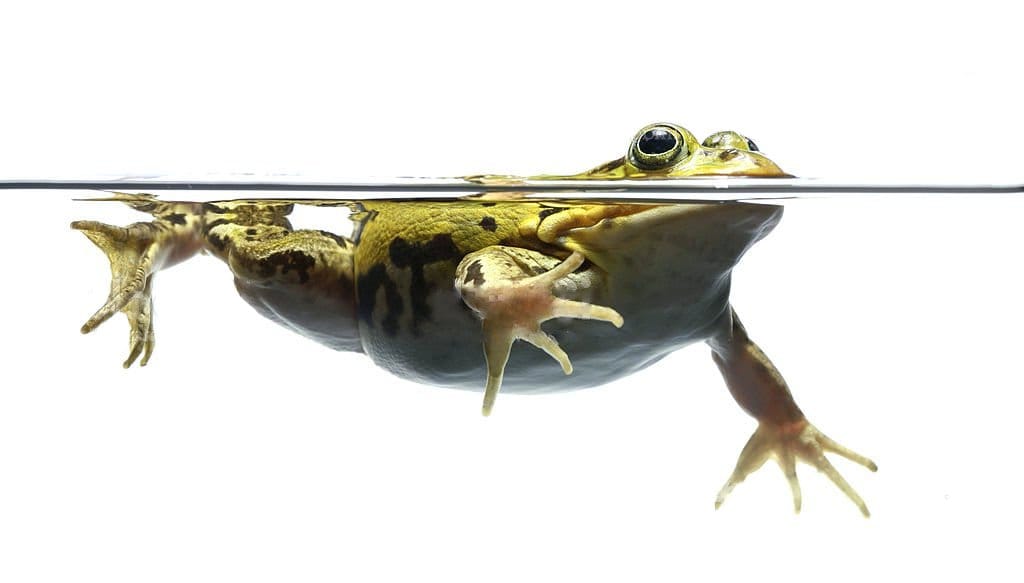Many people have heard about the phenomenon of the frog in boiling water: if you throw a frog into boiling water, it will jump out, but if you put it in cold water, which is gradually heated, the frog will adapt to the increasing temperature until it is boiled alive. We have checked whether this statement is true.
The frog in boiling water syndrome has become a metaphor for people's inaction in problematic situations: if the situation worsens gradually, each small deterioration is accepted without protest, thus leading to catastrophic consequences. Politicians use this term as a metaphor for the gradual tightening of the screws and accustoming society to the “new normal.” Psychologists describe This term refers to the process of gradual emotional burnout. Environmentalists thus explain, why, due to the increasing frequency of weather anomalies, people are less and less sensitive to climate change. References to frog-in-boiling-water syndrome are common in Media, scientific publications, social networks And blogs.
In the 19th century, several scientists conducted experiments to observe the reaction of frogs to slowly heating water. In 1869 this did German physiologist Friedrich Goltz, who was interested in the location of the soul in frogs. The scientist heated a reservoir of water with two frogs placed in it: one healthy and the other headless, since it was in the head, according to Goltz, that the soul was located.
For certificates: In laboratory conditions, frogs can live just as long without heads as with heads. In the wild, such an animal is doomed: although the spinal cord is responsible for motor functions, in the absence of a brain and visual organs, the frog is not able to make vital decisions and avoid danger. And in laboratory conditions, scientists help maintain the life of a decapitated animal.
Within ten minutes, Goltz heated the water from 17.5 to 56 °C. A healthy frog began to look for a way out of a closed tank at a temperature of 25 °C, and died at 42 °C. The headless frog hardly moved until the water temperature reached 56 °C, after which it made several convulsive movements and also died. In 1873 Michael Foster confirmed Goltz's findings that healthy frogs jump out of the water when temperatures rise above 30°C. However, in both experiments the water heated too quickly - 3-4 °C per minute.

In 1897, Edward Wheeler Scripcher summarized the results of existing experiments on heating water with frogs at that time: “A living frog can actually die without trying to get out if you heat the water very slowly. In an experiment in which the temperature increased at a rate of 0.002 °C per second for two and a half hours, the frog died without moving.”
Subsequent experiments differed from the first two in the rate of water heating. Heinzmann's experiments in 1872 showedthat if the water was heated slowly enough (less than 0.2 °C per minute), then the frogs did not attempt to jump out and died at about 37–39 °C. In 11 of Heinzmann's 14 experiments, the frogs had their brains removed. But in the other three experiments on healthy frogs, where the heating rate was reduced several times more, the animals also died without attempting to escape. The same conclusions confirmed Fratscher's experiments conducted in 1875.

Modern scientists dispute the conclusions of their predecessors. In 1995, Harvard University biologist Douglas Melton said: “If you put a frog in boiling water, it will not jump out. She will die. And if you heat the water gradually, the frog will jump out as soon as the water becomes uncomfortably hot, it will not sit still for the sake of your experiment.” Curator of the Department of Reptiles and Amphibians of the National Museum of Natural History (USA) George Zug in the article “How about boiling a consultant next time” also stated, that “if a frog has the opportunity to get out, it will definitely get out,” but if you throw it into boiling water, most likely the frog will be scalded and die from burns.
In 2002, Victor H. Hutchison, a zoologist at the University of Oklahoma who studied the thermal processes of amphibians, saidthat "the legend is absolutely false." In his opinion, modern research has clearly identified a critical thermal maximum for many species of frogs: when the water warms up by about 1 °C per minute, the frog becomes increasingly active, trying to get out of the water, and eventually jumps out if it has the opportunity. But none of these modern scientists—Melton, Zug, or Hutchison—reproduced the extremely slow heating experiment that Heinzmann or Skripcher described. Or he did, but did not admit it due to scientific ethical standards that have changed significantly since the century before last.
Thus, we can conclude that the statement about a frog in boiling water is true, but only in the case of very slow heating or if the brain of the experimental animal is removed.
Half-truth
Read on the topic:
- Is it true that frogs have been successfully used to determine pregnancy?
- Is the story true about the rooster who lived for a year and a half after losing his head?
- Is it true that crayfish don't hurt when they're boiled?
- The Atlantic, “The boiled-frog myth: stop the lying now!”
If you find a spelling or grammatical error, please let us know by highlighting the error text and clicking Ctrl+Enter.






